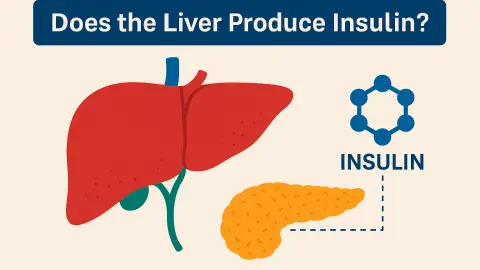Find out how much Lantus can lower blood sugar and learn about the factors that can impact its effectiveness. Discover tips for using Lantus and the importance of working with a healthcare provider to manage diabetes and improve overall health.
Introduction
Lantus (insulin glargine 01) is a long-acting insulin medication used to treat people with type 1 or type 2 diabetes to control high blood sugar levels. It works by helping the body’s insulin do its job more effectively, lowering the amount of glucose (sugar) in the blood. Lantus is usually taken once a day, usually at bedtime, and its effects can last for up to 24 hours. It is important to follow your doctor’s instructions and monitor your blood sugar levels regularly while taking Lantus.
The purpose of this post is to provide comprehensive information about Lantus and its role in managing blood sugar levels for people with diabetes. The post aims to educate readers about the basics of diabetes, the mechanism of action of Lantus, its proper usage, possible side effects, and precautions to be taken.
It also seeks to highlight the importance of monitoring blood sugar levels and working with a healthcare provider to find the right treatment plan. The goal of this post is to empower individuals with diabetes to take control of their health and live a healthy, active life with the help of Lantus.

Lantus Facros and Impact on Blood Sugar-Lowering Effect of Lantus
| Factors | Impact on Blood Sugar-Lowering Effect of Lantus |
|---|---|
| Dosage | Higher dosages may result in a greater blood sugar-lowering effect |
| Timing of Administration | Taking Lantus at the same time each day can help ensure consistent blood sugar control |
| Food Intake | Eating a balanced diet and monitoring food intake can impact blood sugar levels |
| Physical Activity | Regular physical activity can lower blood sugar levels and improve the overall health |
| Other Medications | Taking other medications can impact blood sugar levels and the effectiveness of Lantus |
| Medical Conditions | Certain medical conditions can impact blood sugar levels and the effectiveness of Lantus |
Overview of Lantus
What is Lantus and how does it work?
Lantus is a brand name for insulin glargine, a long-acting insulin analogue used in the treatment of type 1 and type 2 diabetes.
It works by lowering the glucose levels in the blood, helping the body to regulate blood sugar levels. Insulin glargine is taken as a daily injection, typically once a day, and provides a slow and consistent release of insulin into the bloodstream to help regulate blood sugar levels over a 24-hour period.
This helps to maintain stable blood glucose levels and prevent high and low blood sugar levels, improving overall glucose control and reducing the risk of long-term complications associated with uncontrolled diabetes.

Overview of Lantus
What is Lantus and how does it work?
Lantus is a brand name for insulin glargine, a long-acting insulin analogue used in the treatment of type 1 and type 2 diabetes.
It works by lowering the glucose levels in the blood, helping the body to regulate blood sugar levels. Insulin glargine is taken as a daily injection, typically once a day, and provides a slow and consistent release of insulin into the bloodstream to help regulate blood sugar levels over a 24-hour period.
This helps to maintain stable blood glucose levels and prevent high and low blood sugar levels, improving overall glucose control and reducing the risk of long-term complications associated with uncontrolled diabetes.
Mechanism of Action
Insulin glargine works by binding to insulin receptors on cells in the body, which triggers a cascade of events that results in the uptake of glucose from the bloodstream into the cells. This uptake of glucose by the cells leads to a decrease in the levels of glucose in the bloodstream, which is crucial for the management of diabetes.
Insulin glargine is unique compared to other forms of insulin because it has a slower onset and longer duration of action. This is because insulin glargine has a modified structure compared to other forms of insulin, which allows it to form small microparticles that slowly release insulin into the bloodstream over a period of 24 hours.
The slower onset and longer duration of action of insulin glargine allows it to provide a consistent and stable level of insulin in the bloodstream, which helps to prevent high and low blood sugar levels and maintain stable glucose levels throughout the day and night.
In conclusion, the mechanism of action of insulin glargine involves binding to insulin receptors, triggering glucose uptake into cells, and leading to a decrease in blood glucose levels, which helps to regulate glucose levels and improve overall glucose control in people with diabetes.
How Lantus is used to treat diabetes
Lantus (insulin glargine) is used to treat diabetes by helping to regulate glucose levels in the bloodstream. It is typically used in people with type 1 diabetes and can also be used in people with type 2 diabetes who need insulin to manage their condition.
In people with type 1 diabetes, Lantus is used in combination with rapid-acting insulin, such as lispro or aspart, to cover their daily insulin needs. The rapid-acting insulin is used to cover meals and snacks, while Lantus is used as a basal insulin to provide a background level of insulin 24 hours a day.
In people with type 2 diabetes, Lantus may be used as a monotherapy or in combination with oral anti-diabetic drugs. It is usually started in small doses and gradually increased as needed to achieve optimal glucose control.
Lantus is typically injected once daily, at the same time each day, either subcutaneously (under the skin) in the abdomen, thigh, or upper arm, or intramuscularly (into the muscle). It is important to rotate the injection sites to reduce the risk of lipodystrophy (lumps or changes in the fat tissue under the skin) and to ensure consistent absorption of the insulin.
How much does Lantus lower blood sugar?
The amount that Lantus (insulin glargine) lowers blood sugar can vary depending on several factors, including the dose, individual response, and other medications being taken.
In general, Lantus can lower blood sugar levels by approximately 1-2 milligrams per deciliter (mg/dL) per unit of insulin. The exact amount will depend on the individual’s baseline glucose levels, insulin sensitivity, and their total daily insulin requirements.
It’s important to note that Lantus is a long-acting insulin, so it works gradually over a period of 24 hours and does not cause a rapid decrease in blood sugar levels. This helps to prevent low blood sugar (hypoglycemia) and maintain stable glucose levels throughout the day and night.
It’s also important to work closely with your healthcare provider to determine the appropriate dose of Lantus for you and monitor your blood sugar levels regularly. They can help adjust your dose as needed to achieve optimal glucose control.
Factors that affect the blood sugar-lowering effect of Lantus
The blood sugar-lowering effect of Lantus (insulin glargine) can be affected by several factors, including:
- Dosage: The amount of Lantus used can impact its efficacy in lowering blood sugar.
- Timing of administration: Taking Lantus at the same time each day can help maintain consistent blood sugar control.
- Food intake: The amount and type of food consumed, as well as the timing of meals, can affect blood sugar levels.
- Physical activity: Exercise can lower blood sugar levels, so adjustments to Lantus dosage may be necessary for those who are more active.
- Other medications: Certain drugs, such as corticosteroids, can raise blood sugar levels and reduce the effectiveness of Lantus.
- Medical conditions: Chronic conditions, such as liver or kidney disease, can affect the way the body processes insulin and impact the effectiveness of Lantus.
Tips for Using Lantus to Lower Blood Sugar
Here are additional tips for using Lantus to effectively lower blood sugar:
- Store Lantus correctly: Store Lantus in the refrigerator and avoid exposing it to extreme temperatures. Do not use Lantus if it has been frozen.
- Keep track of glucose levels: Regular monitoring of glucose levels can help you understand how Lantus is affecting your blood sugar and determine if any adjustments need to be made to your dosage.
- Know the signs of hypoglycemia: Hypoglycemia, or low blood sugar, can occur as a result of taking too much insulin. Symptoms of hypoglycemia include sweating, dizziness, and confusion. Knowing the signs of hypoglycemia can help you respond quickly in case of an emergency.
- Adjust food intake: If you are adjusting your Lantus dosage, it is important to monitor your food intake and make any necessary adjustments. Eating too much or too little can impact blood sugar levels.
- Avoid alcohol: Alcohol can affect blood sugar levels and should be avoided, especially after taking Lantus.
- Monitor for side effects: Lantus can cause side effects, including weight gain, skin irritation at the injection site, and low blood sugar. Regular monitoring and reporting any side effects to a healthcare provider can help manage these issues.
- Follow a healthy lifestyle: Eating a balanced diet, engaging in regular physical activity, and managing stress can all help to lower blood sugar levels and improve overall health.
Remember, it’s important to work closely with a healthcare provider to determine the best use of Lantus and to make any necessary adjustments to ensure effective blood sugar control.
FAQ
Lantus is a type of insulin that helps to regulate blood sugar levels by allowing glucose to enter the body’s cells, where it can be used for energy.
The blood sugar-lowering effect of Lantus can be impacted by factors such as dosage, timing of administration, food intake, physical activity, other medications, and medical conditions.
Yes, Lantus can cause hypoglycemia, or low blood sugar, if too much insulin is taken.
If you experience hypoglycemia, you should consume a quick-acting source of sugar, such as fruit juice or candy, and then eat a meal or snack to prevent a recurrence.
The frequency of monitoring your glucose levels while taking Lantus can vary depending on individual needs, but it is generally recommended to check at least once a day.
Yes, Lantus (insulin glargine), a long-acting insulin medication, can cause weight gain as a side effect. This is because insulin helps regulate the amount of glucose in the bloodstream and increased insulin levels can result in increased fat storage.
However, the amount of weight gain will vary from person to person and can be influenced by factors such as diet, exercise habits, and other underlying health conditions. If you are concerned about weight gain while taking Lantus, talk to your doctor about possible strategies for managing this side effect.
To minimize the risk of side effects while taking Lantus, it is important to work closely with a healthcare provider, monitor glucose levels regularly, maintain a healthy lifestyle, and report any side effects as soon as possible.
Lantus is a long-acting insulin medication that is typically given once a day, usually at bedtime. This is because Lantus has a prolonged action time of up to 24 hours, providing a steady and consistent level of insulin in the body throughout the night and into the next day. This can help control fasting blood sugar levels and prevent overnight lows. However, the exact timing and dosing regimen for Lantus should be determined by a healthcare provider, as it may vary depending on individual needs and treatment goals.
Yes, Lantus can be taken in the morning, but it’s important to consult with a healthcare provider first to determine the best time and dosing regimen for your individual needs. Lantus is a long-acting insulin medication that provides a steady and consistent level of insulin for up to 24 hours, so the timing of the injection may affect the control of glucose levels throughout the day and overnight.
For some people, taking Lantus in the morning may be more appropriate, as it can help control glucose levels throughout the day.
However, for others, taking Lantus at bedtime may be more effective in preventing overnight lows and controlling fasting glucose levels. A healthcare provider can help determine the best time for Lantus administration based on a person’s glucose patterns and overall treatment goals (Read medical Answer)
Remember, it’s always best to consult with a healthcare provider for personalized advice and recommendations for using Lantus to manage blood sugar.
Conclusion
In conclusion, Lantus is an effective medication for lowering blood sugar in those with type 1 and type 2 diabetes. However, the blood sugar-lowering effect of Lantus can be influenced by various factors, including dosage, the timing of administration, food intake, physical activity, other medications, and medical conditions.
To effectively use Lantus to lower blood sugar, it is important to work closely with a healthcare provider and regularly monitor glucose levels. Additionally, maintaining a healthy lifestyle, avoiding alcohol, and monitoring for side effects can all contribute to effective blood sugar control.
Final thoughts: Ultimately, the key to successfully using Lantus to lower blood sugar is to work closely with a healthcare provider and make any necessary adjustments to ensure the best possible outcomes. With the right approach, Lantus can play an important role in managing diabetes and improving overall health.


